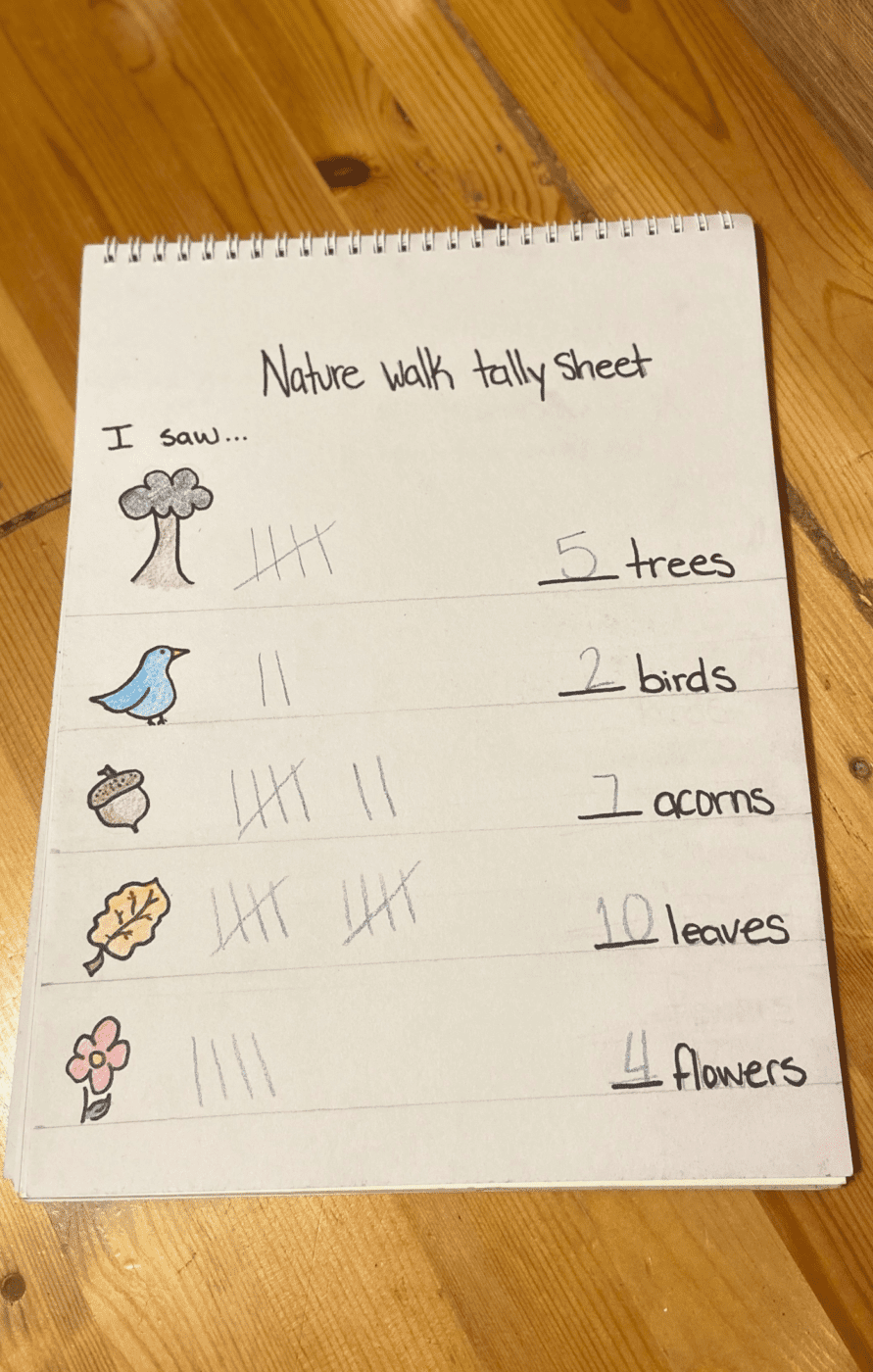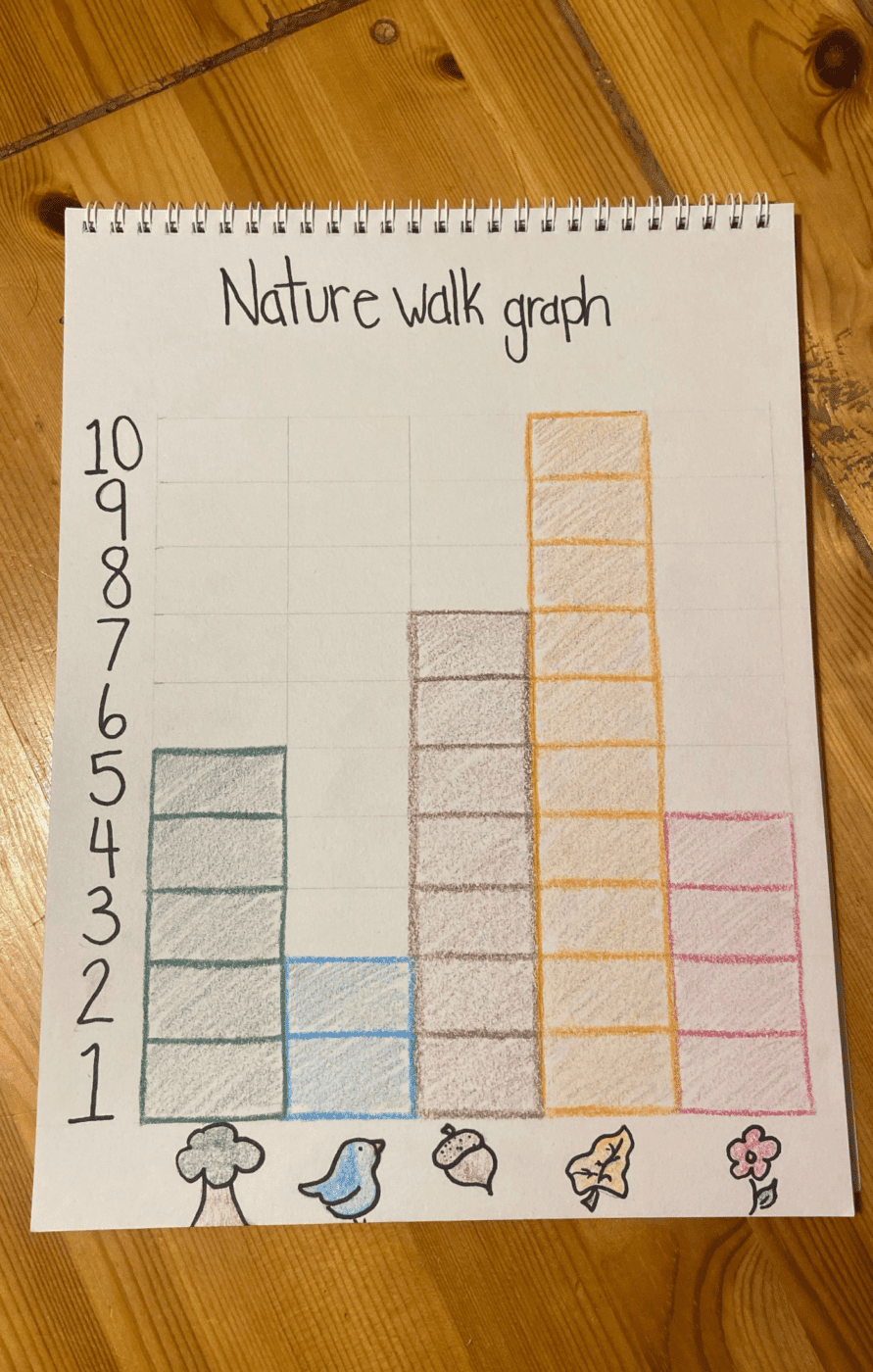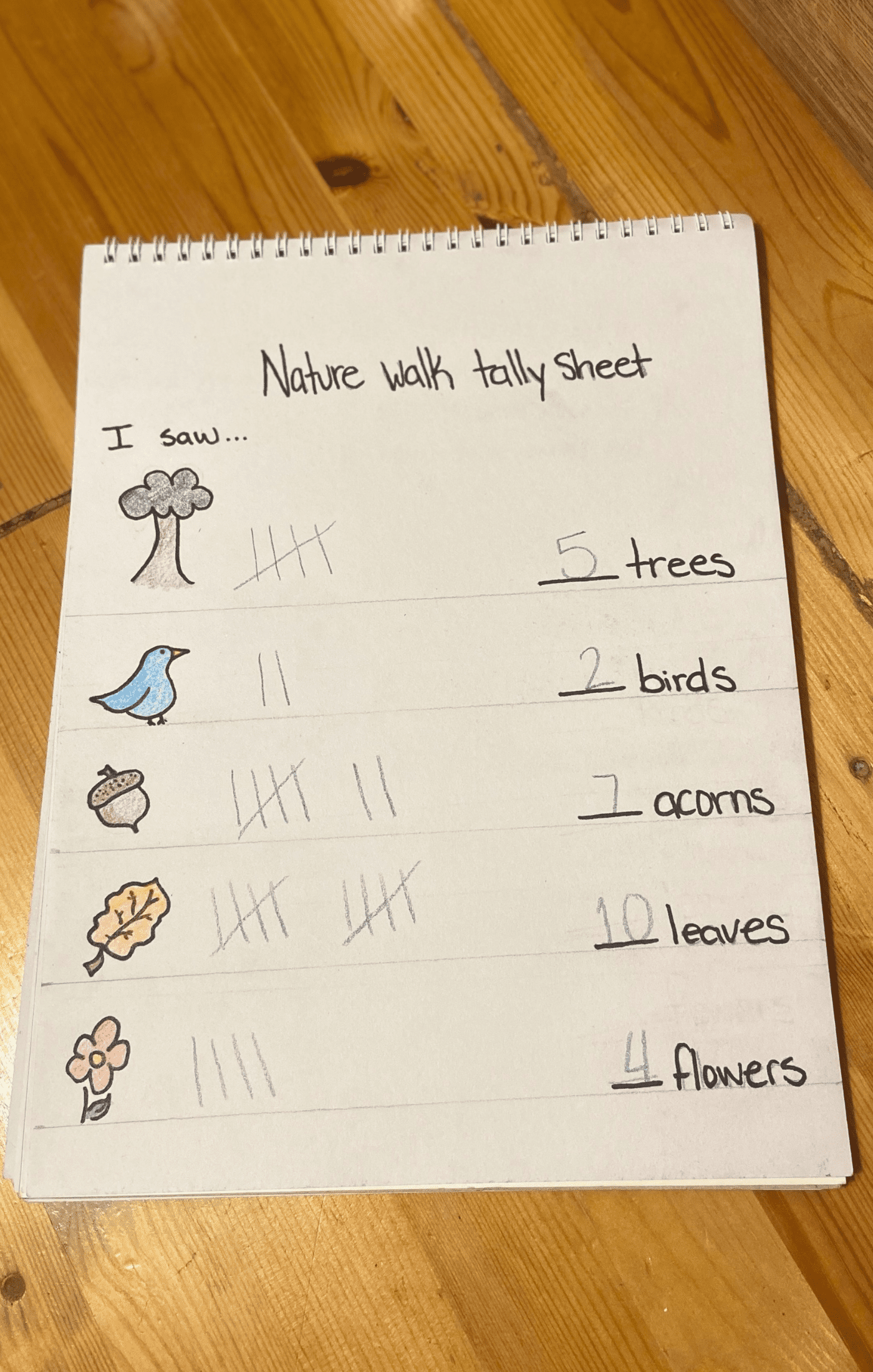Do you have young ones that are learning about how to draw tally marks and about counting tallies? In this article, we will explain why learning how to tally is important, and how you can teach this skill, and we’ll share a free worksheet to get you started.
The basics of tally mark worksheets
Tally mark worksheets are a great way to teach kids the basics of data analysis. By counting a group of items and drawing tally marks to represent their findings, kids can quickly see patterns and relationships in the data. Plus, tally marks are a lot quicker and easier to write than numbers!
And best of all, tally mark worksheets are easy to make and use. Just grab a pencil and paper, and you’re ready to go. The versatility in these worksheets makes them great for nature counting activities, BTW!
To make your own tally mark worksheet, start by creating a list of items to count. This could be anything from different types of animals to different colors of candy. Then, number each item on the list. Next, have your child count the number of items in each category and record their tally marks next to the corresponding number. Finally, encourage your child to look for patterns in the data and discuss what they see.
You could also do a week-long tally graph to track changes in data over time. For example, create a chart tracking two different types of animals you see in your yard each day (deer, squirrels, or different types of birds). Each day, head outside and count how many they see. Then, have them put the info into their tally graphs.

Creating no-prep tally marks worksheets
Heading on a nature walk and not sure exactly what you’ll encounter? There are two options here:
1. Collect fallen items first, then practice tallying. Simply ask your little one to collect things they want to count (acorns, pine cones, leaves, etc.). Once they’ve finished, sort the items into given categories, count them one by one, and practice recording the data with tally marks. If you didn’t bring paper, use a finger or stick to tally in the dirt or sand!
2. Tell your little one you’re going to practice counting during the walk. Encourage them to observe and tell you when they’ve found something they want to count. Pause your walk, count what you see, and tally them up on scrap paper.
To encourage your little ones to practice their observation skills while working on tallying, make it clear what the goal is and give them their own clipboard, paper, and pencil. Then, if they’re inspired to count something, they already have the tools in hand!
Free printable tally mark worksheet
Not into making your own worksheet? No problem! Download my freebie by clicking the PDF below or going to my Teachers Pay Teachers shop. After you’ve finished practicing with this worksheet, encourage them to practice counting an object of their choice and recording their findings on the back!
How to use tally mark worksheets in the classroom or at home
If you’re looking for a fun and educational way to keep your kids occupied, why not give them a tally mark worksheet? Tally marks are a great way to introduce kids to basic mathematics. And what’s more, they’re incredibly easy to use. Simply count the number of objects in a given category, and then mark off each one with a tally mark. You can then use the worksheets to help your child learn to add, subtract, multiply, and divide using tally marks. They’re also a great way to teach kids about skip counting and place value. So whether you’re using them in the classroom or at home, tally mark worksheets are a great way to give your kids a leg up in math.

Using tally marks as a bridge to other math activities
Once your young learners are confident in their abilities to count and tally, you could easily bridge this activity to integrate other math skills. A simple one would be turning your tally marks into a simple bar graph.
If you want to use a premade resource, you can download my simple bar graph here.
Do children need to learn how to make tally marks?
How important is it for children to learn how to make tally marks? Does this seemingly simple skill really have a place in the modern world? After all, tally marks are nothing more than a series of straight lines. So what’s the point?
In truth, tally marks are far more versatile than they might appear at first glance, making them an important resource for data collection and analysis. Tally marks can be used for everything from keeping track of numbers to recording data. In fact, many people who work in fields like accounting and data entry still use tally marks on a daily basis. Scorekeepers in sports games track points by counting tally marks, too!
So while tally marks might not be the most exciting thing that children learn in school, they’re still a valuable skill.
Fun ways to use tally marks in the classroom or at home
Counting objects on a page and filling out tally worksheets is only fun for so long. So, when you are trying to teach students or your children this math concept, have them create tally charts of things that matter to them.
Here are some ideas of data they could collect by drawing and counting tally marks:
- Create a tally graph to show how many different colors you can find in the space around you
- Track how many types of animals you can find (and how many of each!)
- Interview family, friends, or peers to find out their birthday month and draw tally marks to track findings
- A class survey could be anything! Students may want to know how many people have siblings, how many people like science or art the most, or what the most popular flavor of ice cream is
Conclusion: Drawing and counting tally marks
While we hope this blog post has given you some ideas of ways to utilize tally mark worksheets in the classroom or at home, the most important thing is that you have fun with them! Teaching your little learners to track and quickly analyze data by drawing and counting tallies is a simple math skill that is easily demonstrated with easy worksheets.
Once you have demonstrated how to make tally charts and your little ones are ready to start practicing, we hope that our worksheet will be a useful resource. Remember, the items they counted can also be represented in bar graphs! The learning doesn’t have to end at tally marks.
And, if they ask why learning this skill is important, remind them that not only does this way of counting save time, but they are also used to track the score in sports games, too! try to relate this skill to your child’s interest to support their understanding of why it’s important.
Other posts you may like
Here are some of the other math-related posts that we’ve written. They’re all about math concepts for children at the preschool or kindergarten level.

